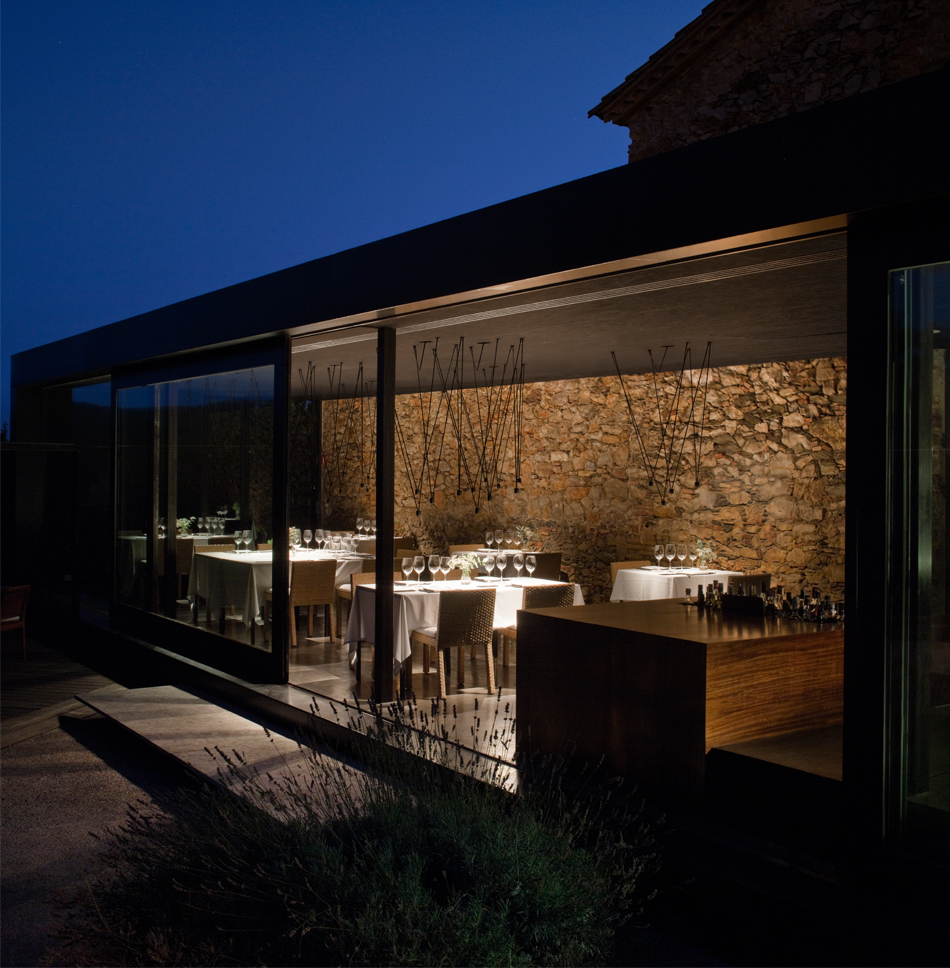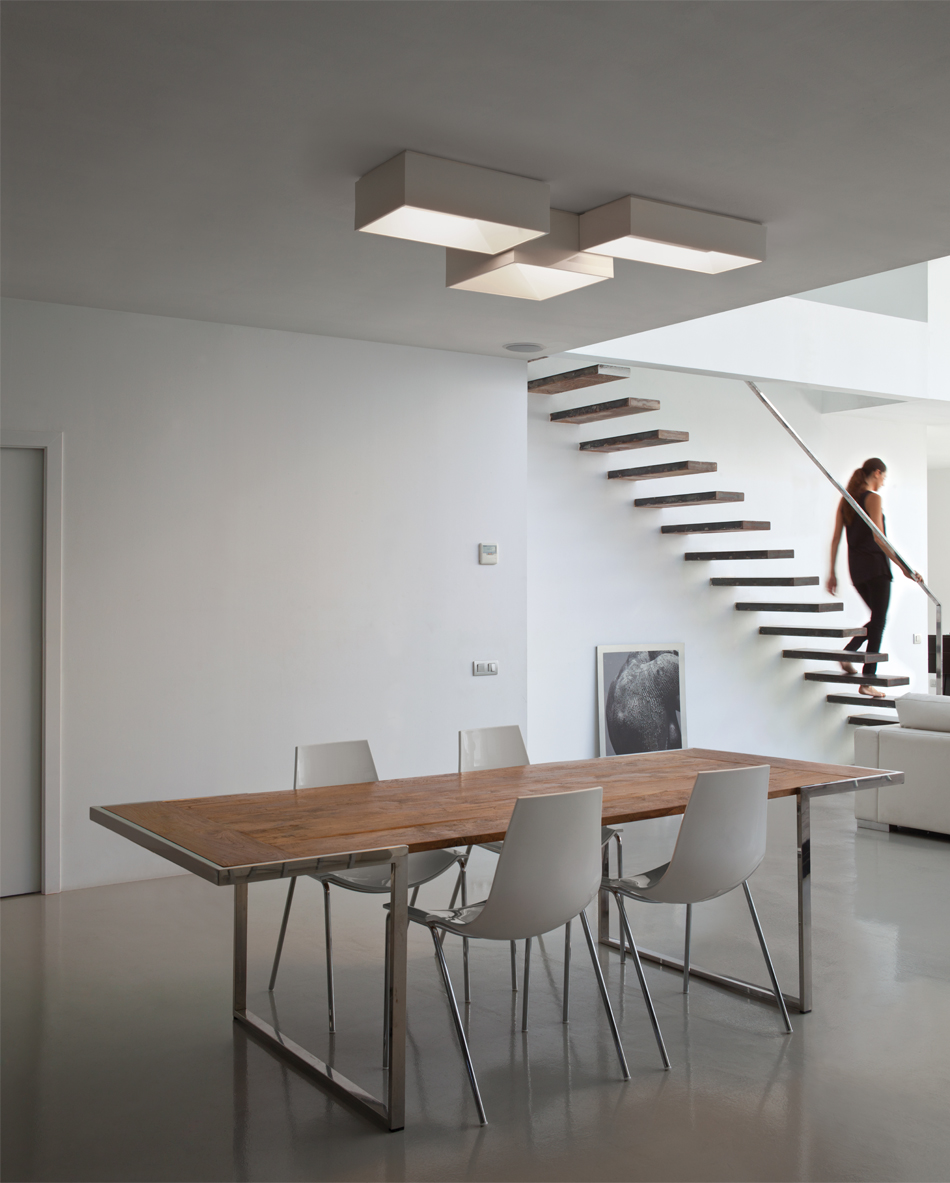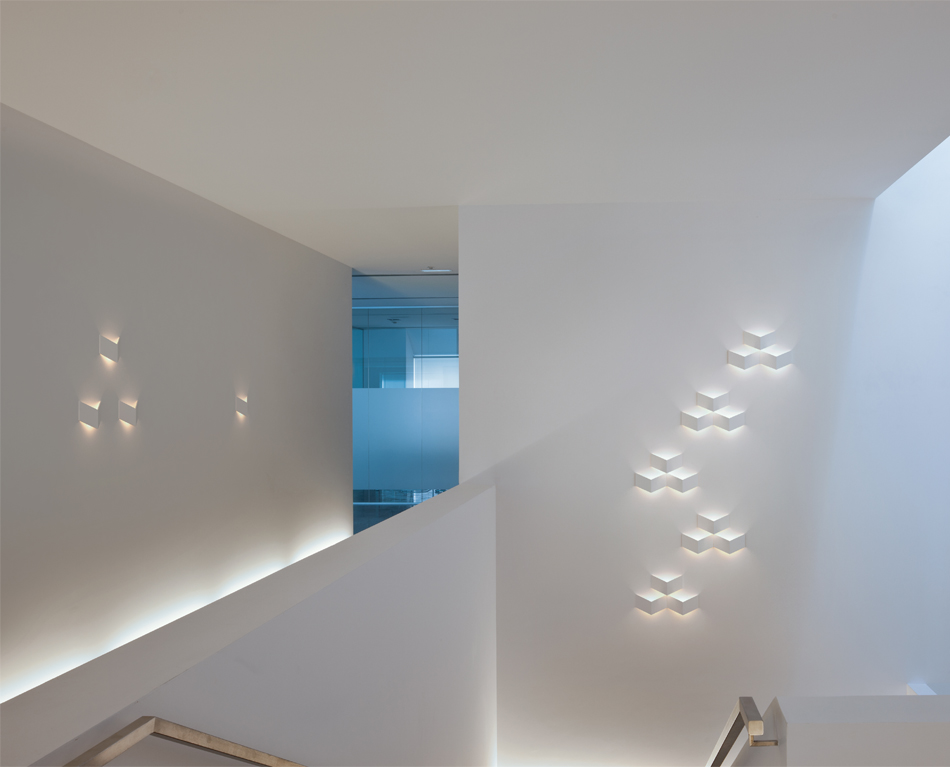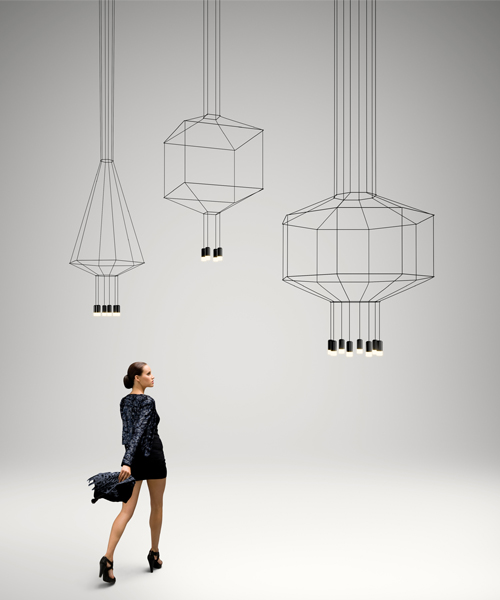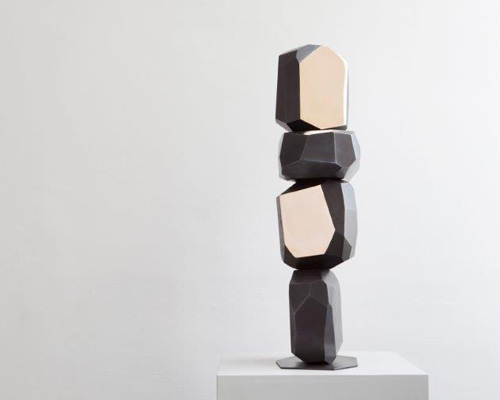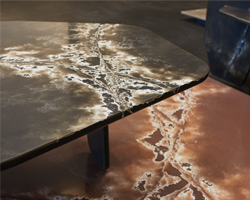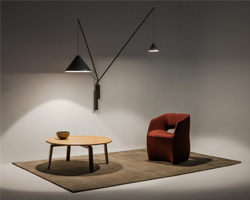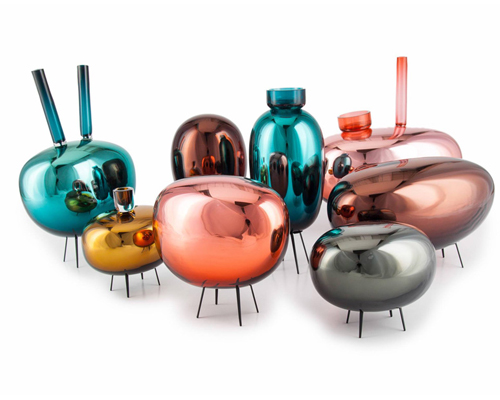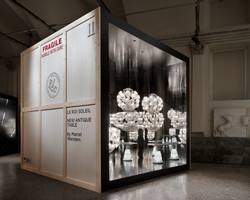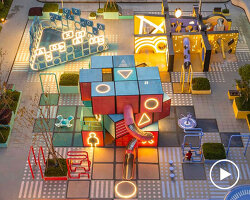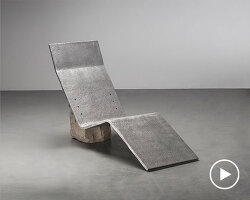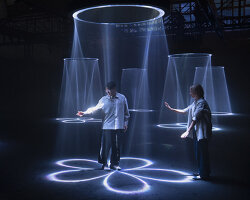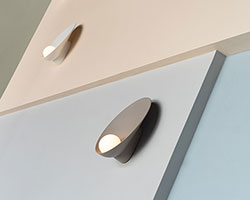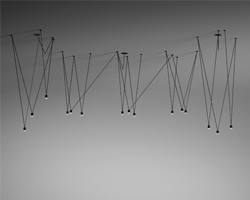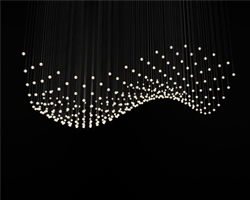the VIBIA ‘CREA’ collection presents customizable lighting designs that adapt to suit individual spaces and different functional requirements. the idea behind the range is that no two architectural or interior design projects are the same, so it follows that no two lighting designs should be treated similarly as well. via the spanish brand’s website, creatives can personalize each light fixture and installation using their special software tools.
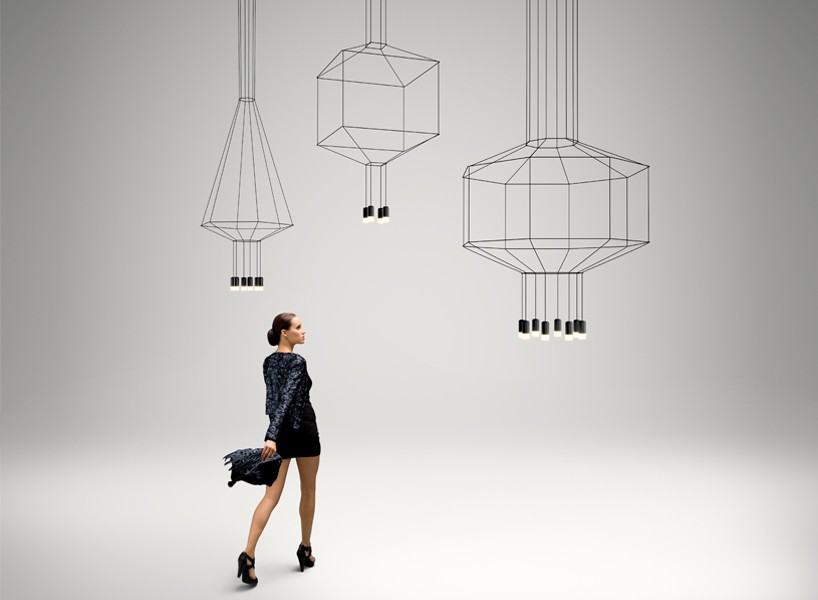
the original ‘wireflow’ lighting design
the VIBIA ‘CREA’ collection is divided into three categories; pendant, ceiling and wall lights. leading the pendant installations line, designer arik levy presents four iterations of the ‘wireflow’; the self-title edition, the ‘chandelier’, ‘freeform’ and ‘lineal’. the first design has a charismatic graphic essence with an ethereal translucent effect. with more diffusers, the ‘wireflow chandelier’ displays a more impacting appearance, which features complex geometries. the assembly of the ‘wireflow freedom’ combines multiple and singular elements, resulting in a visual continuity of linear and individual points of light. lastly, the ‘wireflow lineal’ offers a one-dimensional structure that reflects both a weightless yet bold identity.
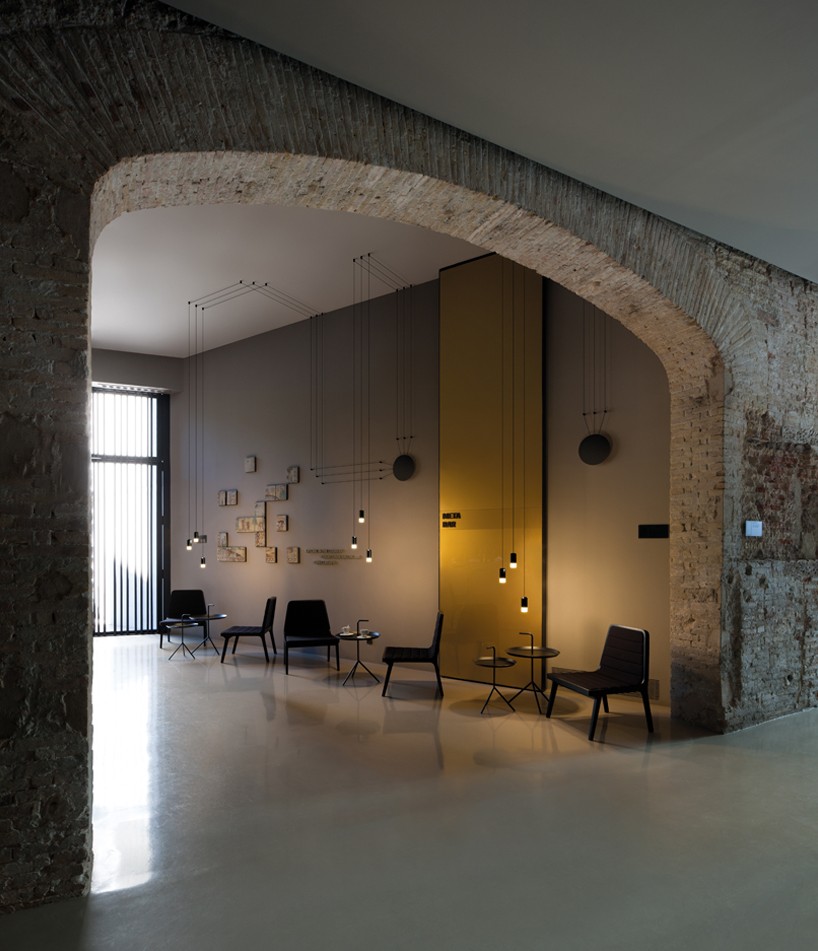
the assembly of the ‘wireflow freeform’ appears to grow on the walls
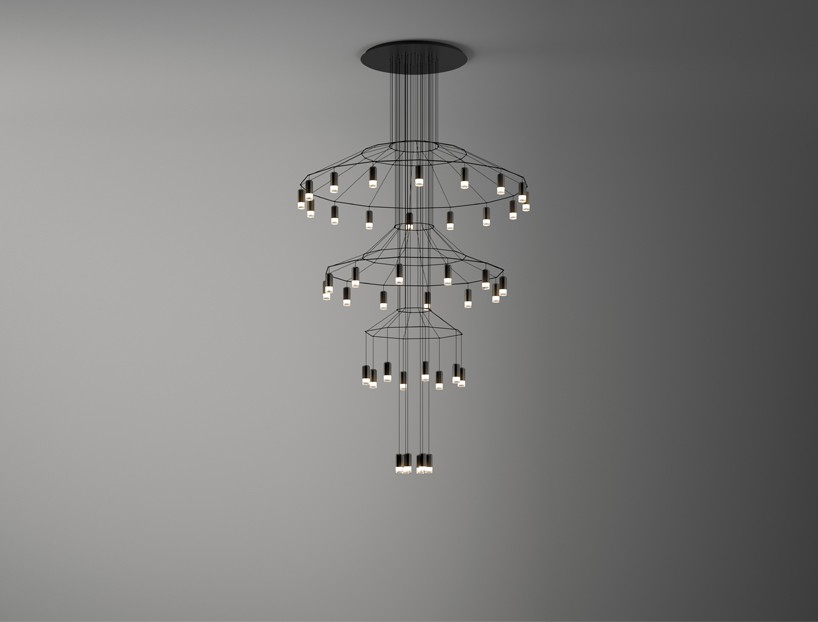
the ‘wireflow chandelier’ has complex geometries
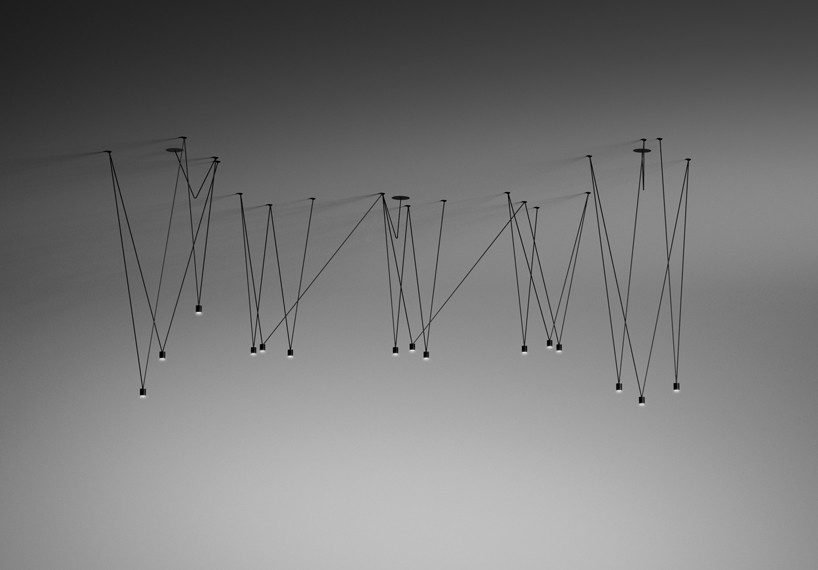
the light rods of the VIBIA ‘match’ design can be ordered or fixed in a more messy way
created by jordi vilardell and meritxell vidal, the VIBIA ‘match’ design is a figure of light rods that reflect a plastic attractiveness. the product enables professionals to construct their own designs; be it organized or chaotic, in order for it to suit the space available and the desired needs.
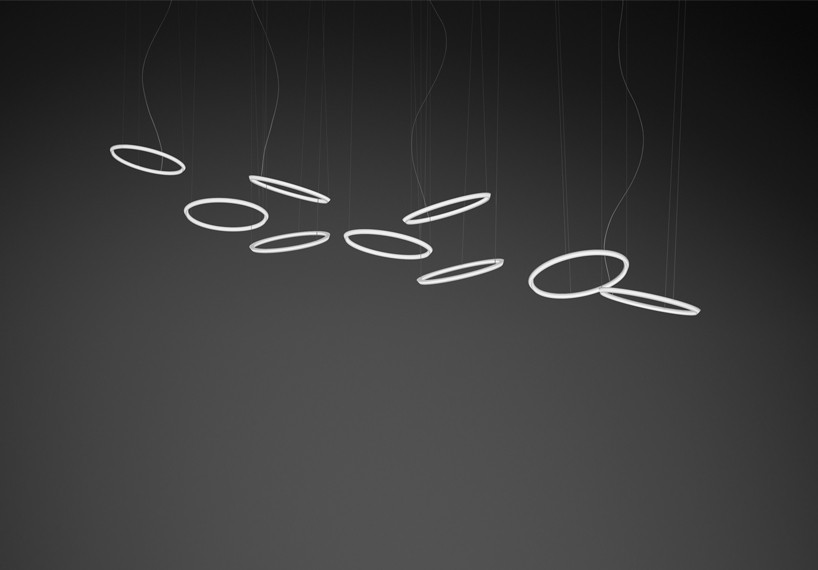
the martin azúa-designed VIBIA ‘halo circular’
the ‘halo’ collection by martin azúa, composes of a ‘circular’ and ‘linear’ version. the simple geometries of the designs float in the air and can be customized with differing angles. combining LED sources and PMMA shades, the flexible ‘halo circular’ and ‘linear’ fixtures create a subtle light, and allows interior designers and architects to build their own constellations for a space.
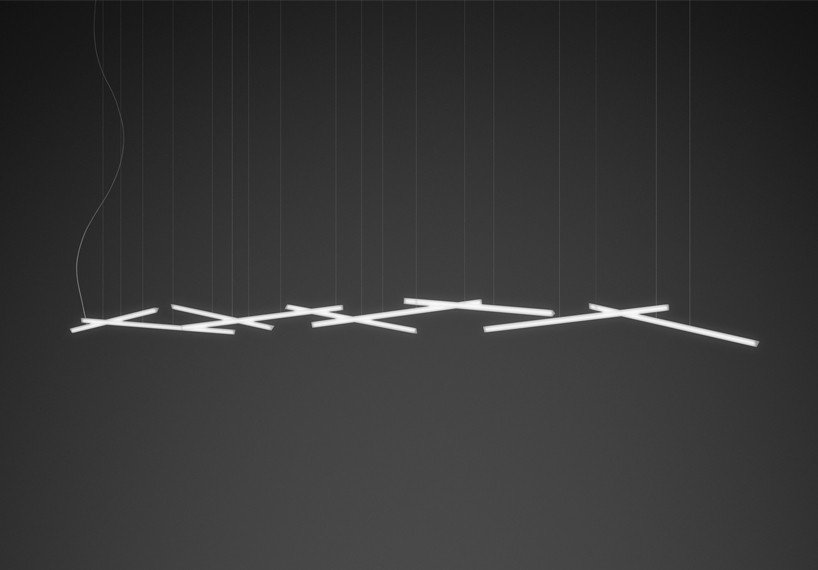
a large assembly of lights for the ‘halo linear’ design
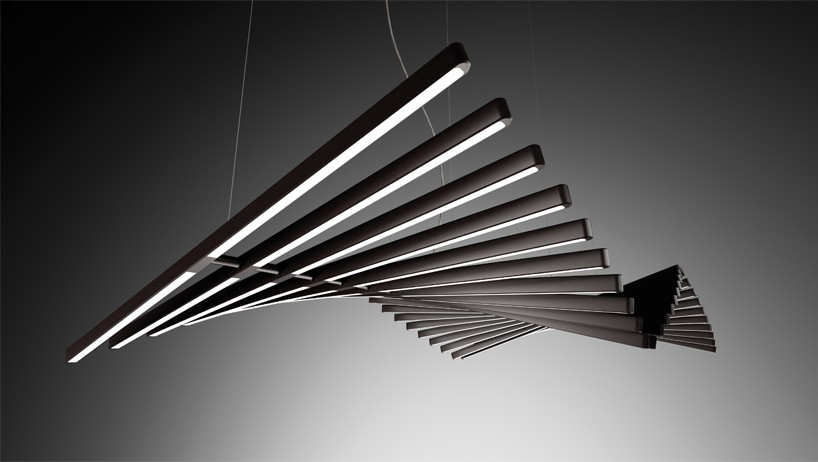
the VIBIA ‘rhythm’ by arik levy
also designed by arik levy, the VIBIA ‘rhythm’ is a versatile, either ‘horizontal‘ or ‘vertical‘, light installation that can be composed of an unlimited number of elements. by simply organizing the stickers in different ways and at varying angles, multiple combinations can be created to form either gentle waves of illumination or more frenzied lighting.
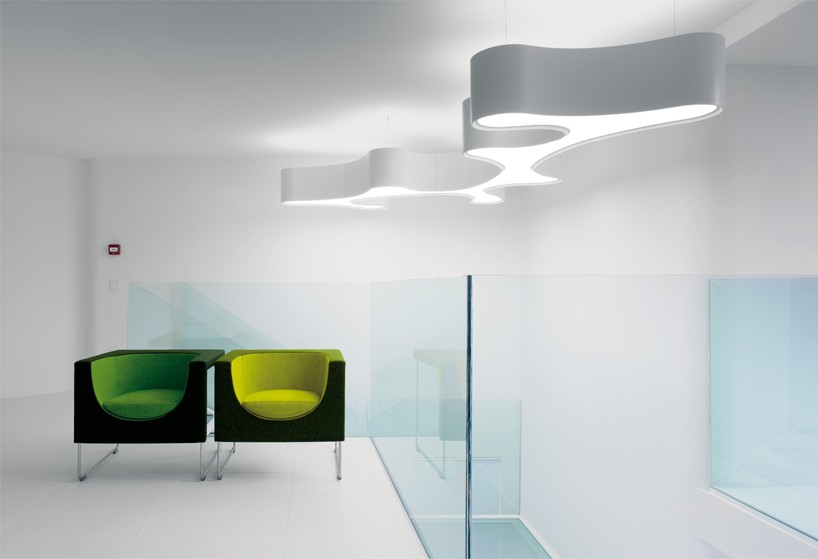
pete sans created the ‘ameba’ pendant light using organic shapes
creating suspended sculptural compositions, the ‘ameba’ pendant light is designed by pete sans, and features very organic forms. the arrangement is composed of five different free-form elements that fit harmoniously together, enabling designers to shape diverse scale installations. this can range from small to large hanging assemblies depending on the environment that it is intended for.
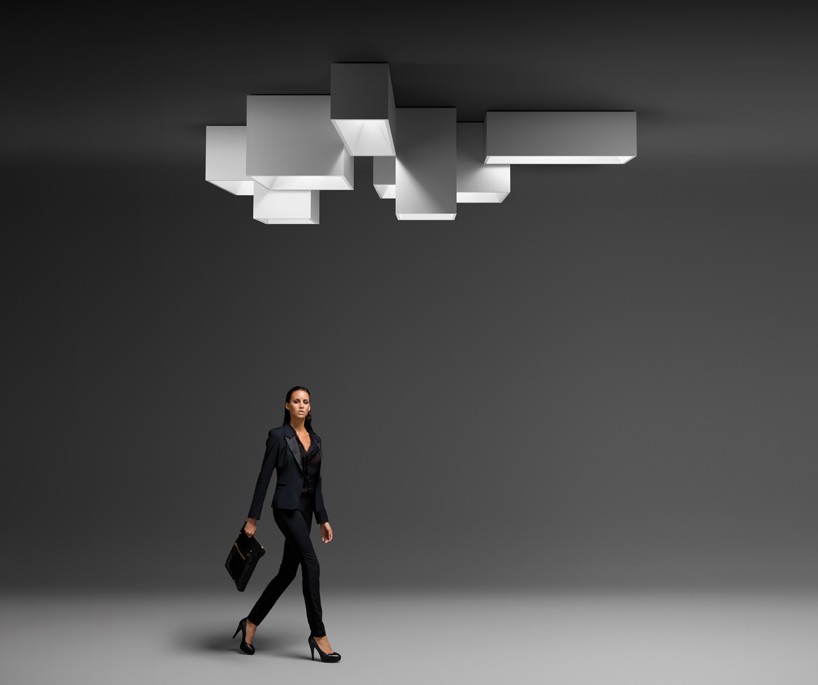
the cubes of the VIBIA ‘link’ light can be customized as different sizes
as a fusion of architectural installations and lighting design, the ‘link’ and ‘link XXL’ ceiling light collections are a series of different size volumes shaped in cubic forms. designed by ramón esteve, the composition of the cubes can be customized to form a uniquely different fixture. notably, the design produces indirect light which is reflected onto the surfaces within.
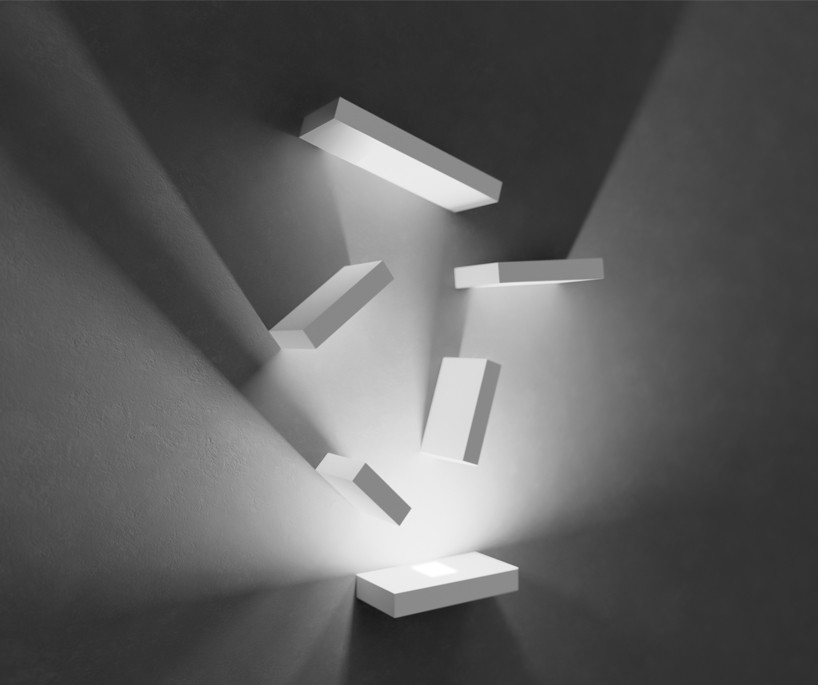
the xuclà-designed ‘set’ light
imagining wall surfaces as a blank canvas, the ‘set’ light by xuclà, consists of a range of rectangular fittings which can have its angles modified in order to create a dramatic composition of lighting. as well, the jordi vilardell- designed ‘puck wall art’ decoratively creates an atmospheric effect by using spherical discs to reflect light.
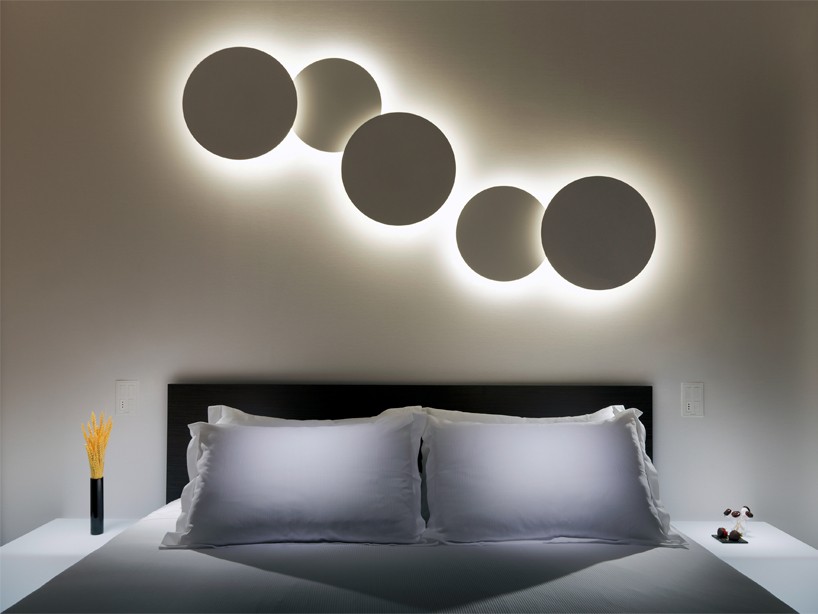
the spherical shapes of the ‘puck wall art’ light by jordi vilardell
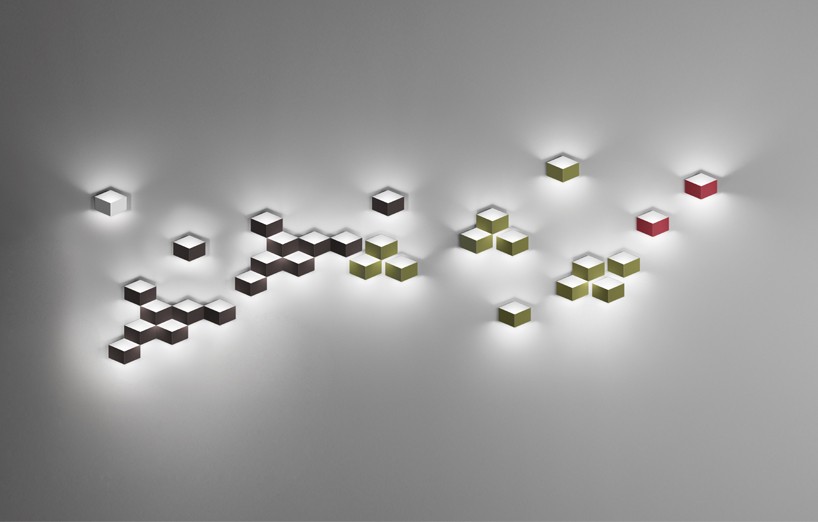
arik levy’s ‘fold’ installation creates a mosaic of light
also crafted by ramón esteve, the ‘origami’ for VIBIA, sources the fore-mentioned japanese art to playfully treat light sources as a sculpted group. this fun element is even more visible in the outdoor version as its configurations mimic the form of a creeper plant. similarly to this design, the ‘fold’ by arik levy allows creatives to construct a mosaic of light onto their walls.
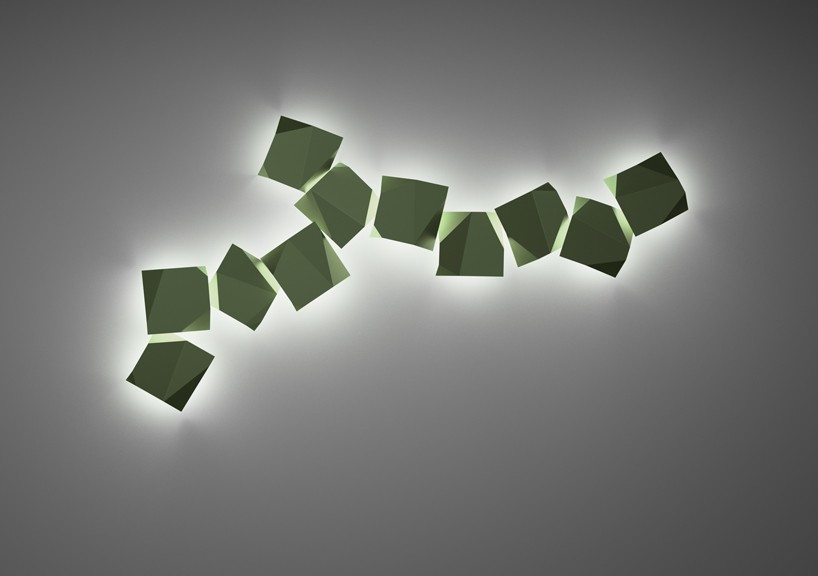
ramón esteve’s playful ‘origami’ lights





